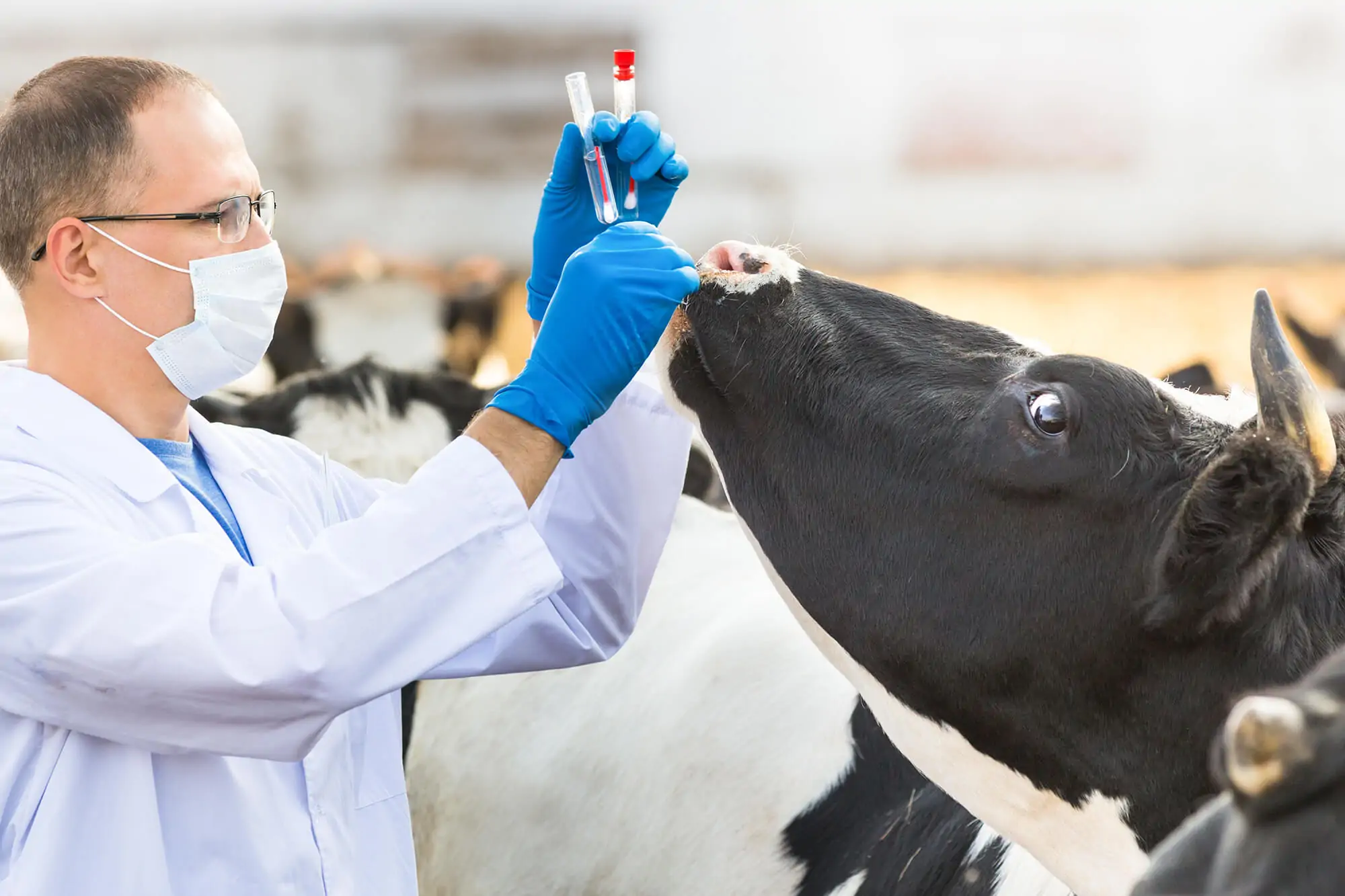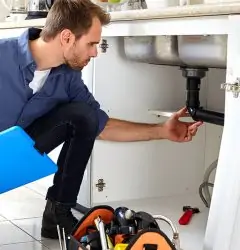20 Jul

The Food and Drug Administration (FDA) is a federal agency of the United States Department of Health and Human Services, founded on June 30, 1906. The main responsibility of the FDA is to protect the public health by regulating food, radiation-emitting products, cosmetics, medical devices, biological drugs, human and veterinary drugs, and vaccines for the nation. If any product or drug ticks all the boxes of the FDA inspection checklist then it is deemed fit for the nation and is available in the market. Products approved by the FDA are recognized worldwide.
What is an FDA Inspection?
FDA is responsible for the inspection of the manufacturers and processors of the products regulated by them, to ensure that these products comply with the relevant regulations set by the FDA. This is a thorough procedure and it requires a team of experts who scrutinize every single processing step to ensure that the product manufactured is safe for the public. If they are inspecting a food factory, they ensure that the food being manufactured follows all the FDA guidelines for food safety.
They carry out inspections all year round for the health and well-being of the general public. Processors and manufacturers that fulfill the FDA inspection checklist are then given the license to sell their products in the market in the United States. Quite a lot of products, including medicines, manufactured in the United States, are exported to other countries too. Hence, the FDA is a regulatory body that is recognized internationally.
What does the FDA inspect?
In general, the FDA inspects the following:
- Dairy farms
- Animal feed processors
- Compounding pharmacies
- Vaccine and drug manufacturers
- Blood banks
- Food processing facilities
Before marketing a new product, companies require the preapproval of the FDA, even if they happen to be a well-known established brand in the market. Apart from this, if your company’s manufacturing and processing sites are located in a foreign country, they would still undergo the FDA inspection, to ensure the products produced are fit for human consumption in the United States, and eventually globally. At the border, imported products are also regulated by the FDA.
The FDA is a very important and well-known body in the public health sector. Furthermore, they facilitate and inspect clinical trials in humans, animals, and microorganisms, for the approval of a medical product, before it can be launched in the market commercially.
Why is the FDA Inspection necessary?
FDA is the oldest regulatory authority that is a part of the federal agency of the United States Department of Health and Human Services. Thus, the FDA approval for products, such as vaccines, medicines, food, etc. is mandatory for all companies. Without the approval of FDA, goods for consumption by the public, cannot be sold. If any products that are not approved by the FDA are found to be sold illegally, strict legal action is taken against such people.
To get your products approved by the FDA, you would have to apply for their approval. Then, they send their team, comprising of dedicated FDA inspectors, who inspect the processes and the environment thoroughly against their FDA inspection checklist, to ensure the rules and regulations are complied for. Without the license issued by the FDA, you cannot sell products in the United States.
The FDA team does not inspect your workplace environment and products just once, they carry out routine inspections and “for-cause” inspections too. This means that they investigate a specific problem that has come to their attention. The main purpose of FDA inspections is to protect the public from any products that may be harmful and unfit for their consumption.
How often does the FDA inspect?
The FDA carries out routine inspections one every two years for domestic setups, and once every nine years for foreign establishments. Apart from the routine inspections, they carry out other types of inspections too, if the need arises. These types of investigations are discussed under the next heading. Once the FDA has inspected a manufacturer, they publish these reports on their website, under the heading of FDA Inspection Reports, for the public to review them. For-cause inspections are often carried out unannounced.
Types of FDA Inspections
The FDA carries out inspections to ensure that the firm being inspected, complies with the laws and regulations, set by the FDA. These inspections are necessary from the public health sector’s point of view. Consumption of products, which are not under the FDA inspection checklist, are not fit for human consumption and must be removed from the market immediately.
If your firm has a history of violations of the FDA guidelines, chances of the FDA inspector conducting a full comprehensive inspection are very high. If your firm has a satisfactory record of GMP, with no significant violations, it is more likely that the FDA inspector will conduct an abbreviated inspection. It is a little impractical for the inspectors to conduct full comprehensive inspections for all firms.
The FDA mostly relies on the GMP of a firm. GMP compliance issues are detected by:
- Consumer or employee complaints
- When a product recalls or is withdrawn from the market
- Any observations made during previous inspections
- Any adverse reaction reports
- Suspicious results of sample analysis
There are four types of FDA inspections conducted. These are:
Pre-Approval Inspection (PAI)
When a manufacturer applies to the FDA for a license to sell products in the market, the FDA conducts the pre-approval inspection to ensure the product being launched complies by all the set rules and regulations of the FDA inspection checklist. Any manufacturing plant, that falls in one of the following categories:
- New Drug Application (NDA) and Abbreviated New Drug Application (ANDA)
- Premarket approval application for medical devices (PMA)
- New animal drug applications (NADA) and Abbreviated new animal drug applications (ANADA)
- Biologic license application (BLA)
Approval will only be granted if the FDA inspectors verify that the Good Manufacturing Practice (GMP) regulation requirements are met. If they are not met, any violations observed during the PAI would be written on an FDA Form 483 and the owner is notified to rectify these violations right away.
Compliance Follow-Up (Post-Approval Inspection)
If any violations are found during the PAI, the manufacturer is handed the FDA Form 483, with all the violations listed. The FDA’s team would revisit the manufacturer, to see if the listed violations have been rectified. This is known as the post-approval inspection, which is done eight to twelve months after the pre-market application has been approved.
Routine
The routine inspections are carried out by the FDA inspectors to look out for any violations of the FDA guidelines. If any violations are seen, they must be corrected immediately while the FDA inspector is still present, this violation will be noted down as a positive indicator for the company’s commitment to stay compliant. Routine inspections may be carried out once every two years for domestic setups, and one every nine years for foreign establishments. Routine inspections may be full inspections or abbreviated inspections.
For-Cause
As the name suggests, this type of inspection is only carried out to address a concern that has been brought to the attention of the FDA. There are two types of for-cause inspections:
- Inspection performed to verify corrective actions after the FDA has taken regulatory action
- Inspections performed after specific reports or events have been reported to the FDA or have been detected by the FDA itself.
Site-risk determination by FDA
When the Food and Drug Administration Safety and Innovation Act (FDASIA) was passed on July 9, 2012, the FDA adopted a new approach to the site inspection frequency. This new approach requires them to inspect sites based on the risk factor. Sites with the highest public health risk are addressed first.
The FDA relies on certain risk factors which helps them to address the highest risk sites first. These factors are:
Inherent risk of products
Some products may have a more adverse public health reaction than other products on the market, due to these products having intrinsic properties. This may lead to deficiencies in the quality of the product.
Market
Products that have been newly launched into the market, generally posses a greater risk than products that have been there for a longer time.
Complexity
Any product which is produced by a complex manufacturing process, is automatically seen as a high-risk product.
Inspection record of the facility
Previous poor inspection records, GMP compliance history, and frequent inspections of a facility, indicate a high-risk product.
These above-stated risks are general risks taken into consideration by the FDA. Some facilities may need to prepare for inspections more frequently than other facilities.
Which products does the FDA label as “high risk?”
Certain firms require more frequent inspections than other firms. These include pharmaceutical companies and facilities that manufacture medical devices that are in critically low supply or are deemed as life-saving drugs/devices. Other high-risk products include the following:
- Dairy products
- Seafood
- Fruits and vegetables
- Spices
- Shell eggs
- Infant formula milk
- Medical foods
- Custard-filled bakery products
- Acidified and low acid canned foods
- Atmosphere-packaged products
Preparing for the FDA Inspections
Preparing for FDA inspections is not something that can happen overnight, but instead, you have to prepare for it proactively, so that you can be ready for the FDA inspection process at any time. The FDA does not provide the facility with any inspection checklist, therefore, you are expected to be fully prepared for a full inspection of your facility. You should conduct regular internal audits to be updated regarding your company’s progress, and also to detect any compliance gaps which can be pinpointed easily and rectified immediately.
However, conducting regular audits can be very time consuming, if you depend solely on paper. Your internal audit reports can be much quicker if you make use of technology. One such mobile inspection app is EcoDocs, which helps you in carrying out paperless audits without any hassle.
During the FDA inspection, you have to give proof of a sound Good Manufacturing Practice (GMP) through proper documents and other sources. Even if you outsource manufacturing to factories, the FDA will inspect your foreign facilities and will hold you accountable if any violations are found. One thing to keep in mind is that the FDA does not notify the domestic facilities before inspecting, but they notify the foreign suppliers before the inspection. Facilities are notified via email, fax, or post mail to schedule an appointment for the inspection.
Once you have everything updated, identify all the records FDS is likely to audit. These documents vary with every firm being inspected. Generally, these documents include:
- Personnel qualifications of your employees
- Training procedures conducted for your employees
- Any customer complaint files
- Any product recall and rejection reports in the past
- Statistical evaluation of product data
- CAPA procedures
- Any deviation reports
- Shipping records
- Internal audit reports
- Production and process control reports
- Process validation reports
- Equipment calibration and maintenance reports
- Internal investigations into any production failures experienced in the past
An example of audit documents required by the Institutional Review Board (IRB) includes:
- Enrolment/screening log
- All informed consent forms
- AE reports
- Clinic or hospital chart
- Consultation reports
- Laboratory, radiology reports, EKGs, etc.
- Patient diaries
- Device/Drug Accountability logs
- Locate and organize all records
Once all the audits are set straight, the next thing to focus on is your employees. How well can they answer the FDA inspectors? You should have well-trained and well-informed Subject Matter Experts (SME) presented in front of the FDA inspectors. Knowing all the subject matter is just not enough; how your SMEs handle stress, their demeanor and attitude, their adaptability, and their competency in answering the inspector’s questions also matter. Practicing simulating investigator interviews is a good option to prepare your SMEs for the FDA inspection.
Preparing For The FDA Audit- 5 FDA Inspection Checklists
EcoDocs is a mobile inspection app that allows you to carry out paperless internal audits. It provides you with a digital task designer and checklist maker to help prepare you for your FDA inspection. There are five featured inspection checklists you can make for your business needs. The five featured inspection checklists are:
FDA Inspection: Preparedness Checklist
This checklist is very useful for managers to help them prepare all the required documents before the inspection. With the help of this checklist, you can:
- Check the preparedness and the availability of the staff, facility, equipment and all the required documents
- Assign tasks to the SMEs
- Identify any errors and help to prioritize them
- Measure the readiness of the facility using a score
FDA Inspection: Food Manufacturing GMP
This checklist is specially designed for food manufacturers, based on 21 CFR part 110. This checklist helps to:
- Assess the general condition of the facility, staff, equipment, and the food manufacturing processes involved
- The results of inspections carried out on multiple sites can easily be reviewed on an online platform
- You can share audit reports via a web link or as an attachment
FDA Audit- Pharmaceutical GMP Checklist
This checklist can be used by the operations managers’ of pharmaceutical companies to conduct their internal GMP audits. It mainly focuses on these six areas:
- General Quality Assurance (QA) controls and various procedures
- Facility controls including security
- Equipment design and placement
- Operational control
- Finished product control
- Material component control
FDA Cosmetics GMP Audit Checklist
This checklist follows the FDA’s GMP cosmetic guidelines. This can be used by managers to help them inspect the facilities, equipment, raw materials, staff, record keeping, etc.
FDA-GMP Compliance Checklist
This is a general GMP compliance audit checklist to help assess the overall manufacturing practices and to ensure that all manufacturing protocols are followed at the manufacturing facilities. This allows the operation managers to ensure that all standards, set by the FDA, are met.
FDA Inspection Checklist: Dos and Don’ts
Once the FDA decides to inspect your facility, first and foremost, do not panic. Stress is not what should be on your mind; instead, you should focus on your audits and checklists to set the record straight for the FDA. To make it easy for you, here is a list of dos and don’ts which you should follow to help you get through the inspection. Your FDA inspection readiness depends upon this list.
Dos
- Designate a person to serve as an escort to the FDA inspector
- Organize all the likely documents to be audited by the FDA inspector
- Send a company communication to alert all the employees when the FDA is on-site
- Be prepared to show the processes or Standard Operating Procedure (SOP) to the inspector
- Do not act over smart; only answer questions related to your position
- If you do not know the answer to any question, answer with “I don’t know, but I will follow up,” instead of beating about the bush
- Answer questions politely, truthfully and to the point
- Give references from the documents, where possible
- Listen to the questions carefully before answering the inspector
Don’ts
- Lie
- Give additional details; only answer what you have been asked
- Provide any direct access to any electronic systems
- Allow the FDA inspector to freely look through documents, walk around unescorted or take pictures or videos
- Argue with the FDA inspector
- Forge someone’s signature
- Fabricate any documents
- Read or sign any statements or affidavits
- Provide any personal records or financial information
- Admit non-compliance
What should you expect at the facility during an FDA Inspection?
An FDA inspection may take up to three days, depending on the size of the site inspection. Usually, a team of two inspectors is sent by the FDA to carry out the inspection, but if the site is too big, more than two inspectors can be sent.
As mentioned above in the list of dos, make sure that the inspectors are never alone and are escorted by a member of your team at all times. When the team arrives, there is a meet and greet session, with the relevant personnel of the firm, who are informed about the purpose and scope of the inspection by the FDA team.
Your SMEs should be available to answer any questions that the FDA inspectors might have. Furthermore, all the required documents should be readily available for the inspectors to inspect. They may also collect samples of products, raw materials, and labels during the inspection for testing and analysis.
Can FDA take pictures during the inspection?
Yes, the FDA can take pictures during the inspection if the see any violations of the FDA guidelines.
What to expect after the inspection concludes?
If the FDA inspector issues an FDA Form-483, it means that they have detected a few violations at your facility. If you are not handed this form, then it is a good sign and you should wait for the official FDA Inspection report, which is usually issued within 30 days of the inspection.
What is a 483 from the FDA?
The FDA Form-483 is a form issued by the FDA inspector at the end of the inspection. If the FDA inspector detects any objectionable findings or violations during the inspection, they will hand you this form will all the details on it.
This is not the official inspection result, but that does not mean that you wait till the FDA’s official result to rectify the violations. The official result, the FDA’s Establishment Inspection Report (EIR), is related within 30 days of the inspection. The EIR officially reflects a factory’s GMP compliance. The results of the EIR are:
- No Action Indicated: this means that no violations were observed
- Voluntary Action Indicated: this means that some violations were observed, but there is no need for any further regulatory action
- Official Action Indicated: if the violations observed require administrative sanctions and mandatory corrective actions.
How to respond to form 483s and warning letters?
You are expected to respond to the FDA, in writing, within 15 business days of the issuance of the 483, to avoid any further regulatory action. In this response, you should address all the violations observed during the inspection by explaining in detail how you plan to tackle these violations. You should also provide a timeline for addressing these issues. Furthermore, you should support their claims with facts and data and you may also request for any clarification of what the FDA requires.
If you fail to respond to the 483, the FDA, most likely, would issue a warning letter to you. This warning letter is issued when serious violations of the FDA guidelines were found during the inspection, and the firm’s response to the 483 was not convincing enough. If a warning letter is issued to you, you are expected to respond to it within the next fifteen days. Moreover, the FDA publishes the 483s and warning letters on their website for the public to see, as part of consumer protection.
Closure Conference
At the end of the inspection, you can request the inspectors to discuss any observations or violations observed by them during the inspection. The inspectors may discuss the practices which can be improved and those practices which the inspectors may label as violations. Take this as your last chance to fix any issues before the official FDA results are issued.
Benefits of a CMMS for FDA Inspection Checklist
The Computerized Maintenance Management System (CMMS) software is the ideal solution for every business to meet the regulatory compliance standards set by the FDA. All your documents are stored electronically, reducing your time and efforts spent to maintain and track records.
The benefits of using the CMMS for an FDA inspection checklist are:
Audit Trail Capabilities
All changes are logged as work orders, with details such as what changes were made, who made them and when were they made. This way you would have work order history, with all the documents required to pass audits. If your firm has multiple locations, you can verify all procedures, in addition to being able to see work order change records.
Reporting
Maintenance reports show the compliance of the FDA regulations. These reports include the ones related to your equipment, maintenance activities, and labor. Custom reports can also be made that suit your business requirements.
Customized Fields
You can ensure that all essential data has been recorded, without leaving out any details by adding customized fields.
Digital Signatures
Instead of relying on paper records, you can make use of the digital signatures to set work order closure permission approvals.
Employee Information
It is essential to maintain all your employees’ information. This may include their certificates, work experience, personal data, etc. This comes in handy when you are asked to present information about your employees during an FDA inspection.
Preventative Maintenance Tasks
Adding preventative maintenance tasks to work orders ensures that the correct procedure is followed every time. Maintenance history serves as a proof of the jobs being completed.




Ecodocs